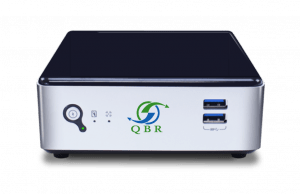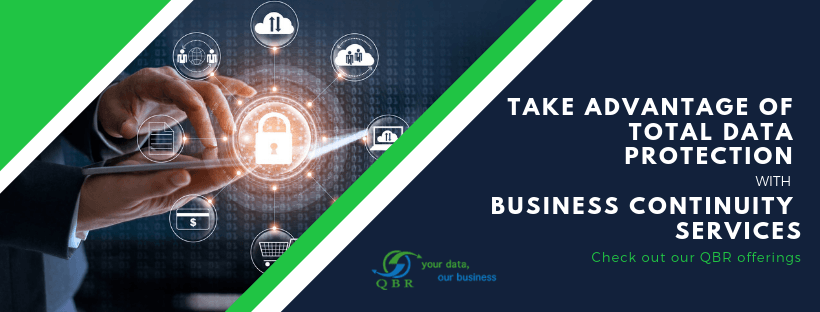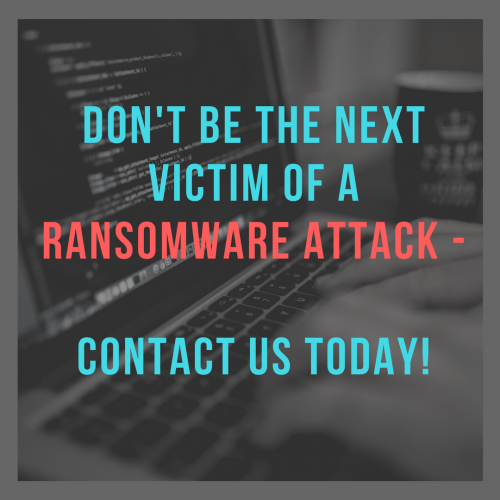Posts
When software experts mention the words “business disaster” or “disaster recovery”, many top business people think about natural, or weather, events, such as floods, hurricanes, fires, ice storms, earthquakes, tsunamis, wind storms, etc. These disasters can of course occur at a company and can have devastating repercussions, such as prolonged downtime, property damage, injuries and more. The likelihood, however, of such weather events are much less likely than technological and man-made events.
Technological and man-made disasters, including hardware failures, software malfunctions, user errors, security breaches, etc., can also have devastating effects on a business’ operations, causing downtime, data loss, lost productivity, lost revenue, delayed sales, increased expenses and more. One hour of downtime can cost companies anywhere between tens of thousands of dollars for small businesses to hundreds of thousands of dollars for large organizations!
It’s critical to know your Recovery Time Objective (RTO), which is your company’s maximum allowable downtime. How long can you go down and survive? If your RTO is seconds or minutes, then you better make sure you have a business continuity solution with off-site data storage.
 Many businesses, without a proper business continuity and disaster recovery plan and solution, don’t recover from some disasters. So, before you think to yourself, “well we have beautiful weather here or we hardly ever get power outages, why should I pay for a Business Continuity Service?” – remember that your company is much more likely of falling victim to a ransomware attack, having an employee accidentally delete an important file or dealing with a malfunctioning server. No matter what sudden disastrous event occurs, you want to be protected. Ask yourself, is my company’s data worth risking? You may have gone the last 10 years disaster-free but can you truly guarantee that the next 10 years will also be free of crisis?
Many businesses, without a proper business continuity and disaster recovery plan and solution, don’t recover from some disasters. So, before you think to yourself, “well we have beautiful weather here or we hardly ever get power outages, why should I pay for a Business Continuity Service?” – remember that your company is much more likely of falling victim to a ransomware attack, having an employee accidentally delete an important file or dealing with a malfunctioning server. No matter what sudden disastrous event occurs, you want to be protected. Ask yourself, is my company’s data worth risking? You may have gone the last 10 years disaster-free but can you truly guarantee that the next 10 years will also be free of crisis?
Business Continuity services for complete data protection
In our blog Business Continuity: A Much-Needed Insurance Policy For Your Data we mentioned the term “data insurance”. This is how our customers view their Business Continuity solution and service. They see it as an insurance policy in place to protect their company’s most important asset – their data! Companies are more and more willing to pay a monthly Business Continuity service fee to ensure that their data is 100% protected as well as easily and quickly recoverable. It’s useless to simply backup your data only to realize after a disaster struck that it takes DAYS to recover it all! Now that companies are using full management systems rather than keeping important information on paper, they realize the need for such a backup solution.
Don’t be Victim of Ransomware
 We all keep hearing about Ransomware. This type of security breach is currently a big problem for businesses, even individuals, all over the world. The likelihood of a company experiencing a ransomware attack is very high. This virus not only encrypts a company’s data but also demands payment for it to be unlocked. The governments discouraged victims from paying hackers since paying the ransom does not guarantee the release of their files.
We all keep hearing about Ransomware. This type of security breach is currently a big problem for businesses, even individuals, all over the world. The likelihood of a company experiencing a ransomware attack is very high. This virus not only encrypts a company’s data but also demands payment for it to be unlocked. The governments discouraged victims from paying hackers since paying the ransom does not guarantee the release of their files.
There are many ways a company can fall victim to such a cyber attack. The most common are when computer users click on a bad link or download an encrypted email attachment. Other scams include phishing, baiting, quid pro quo, pretexting and tailgating.
Be prepared for any business disaster with Business Continuity
 QBR (Quick Backup Recovery) is a hybrid business continuity and recovery solution. It has the capability to store data both on premises and in the cloud. No human intervention is needed during backup. Virtual Machine snapshots are scheduled from the start at which point QBR can take snapshots at intermittent times throughout the day of the office servers and workstations to be stored on the QBR device as well as pushed off-site in the cloud. This off-site capability ensures optimal safety in case the QBR device gets damaged from a fire, flood, or other means on-site. During the restoration process, there are several options available to the business;
QBR (Quick Backup Recovery) is a hybrid business continuity and recovery solution. It has the capability to store data both on premises and in the cloud. No human intervention is needed during backup. Virtual Machine snapshots are scheduled from the start at which point QBR can take snapshots at intermittent times throughout the day of the office servers and workstations to be stored on the QBR device as well as pushed off-site in the cloud. This off-site capability ensures optimal safety in case the QBR device gets damaged from a fire, flood, or other means on-site. During the restoration process, there are several options available to the business;
- File Restore: If the company needs to recover a specific file(s) from a specific VM taken at a specific time of the day
- Bare Metal Restore: If a company needs to restore a complete VM from the local device into a physical machine
- Export VM: If a company needs to restore the backup from the QBR device to HyperV or VMware format, so it can be deployed on a virtual environment.
With all of these options, a company’s data can be accessed almost immediately during a disaster. The whole point of a Business Continuity solution is to ensure a business remains operational, without any data loss, during a disaster.
Keep your business data safe from hackers and other disasters
It’s important to understand why total data protection is essential in today’s business world. Businesses are now run and managed with software systems so it’s important to ensure no downtime is incurred if something unexpected happens. Companies must not only protect themselves from natural disasters but also from technological and man-made events, which are much more likely of occurring. Reduce your risks with a Business Continuity solution and a solid disaster recovery plan.
When it comes to your business’ future, don’t take a chance! Look into the safest way to backup and restore your data with QBR.
Ransomware: Why You Should Care
Viruses extortionists (ransomware, cryptoviruses) work in a similar way: they block the user’s desktop, encrypt important documents and files saved on the computer, then delete the originals and demand a ransom. Typically in Bitcoin, so they can provide you with a key to unlock your computer and to be able to continue working and have access to your saved files. Often the creators of cryptoviruses have strict conditions for the terms of payment of the redemption. If the owner of the files does not fit within these terms, the key is deleted and it will be impossible for the user to restore the files.
Ransomware is the most massive and significant attacks of computer viruses in the world.
Here a chronology of the first viruses in history, as well as the largest-scale virus computer attacks.
In 1971, the first program in the world, which was able to independently reproduce copies of itself on a computer network, was created by the engineer of the American technology company BBN Technologies, Bob Thomas. The program, called Creeper was not malicious: its functionality was limited to self-copying and displaying the message: “I’m the creeper, catch me if you can!” A year later another BBN engineer, e-mail inventor Ray Tomlinson, created the first anti-virus that self-replicated on the network computers and deleted Creeper.
The first virus created in 1981 caused an uncontrolled “epidemic.” This virus spread using a technique now known as a boot sector virus. A virus called Elk Cloner was created by a 15-year-old American high school student Richard Skrenta by infecting the Apple II operating system. The virus infected the magnetic diskettes and, after the 50th access to the infected media a blank screen appears and a joke poem message was displayed. In some cases, the virus could also damage the floppy disk.
The first malicious program Michelangelo that infected over 1 million computers worldwide appeared in 1991 in Australia was written for IBM-compatible personal computers (PCs) and the DOS operating system. Other information from the disk could be restored, but it was difficult for an ordinary PC user to do it. The creator of the virus remained unknown, some cases of program activation were recorded until 1997.
On June 2, 1997, Chen Ing-hau, a student at the University of Datong (Taipei, Taiwan), created the first version of the Chernobyl virus (“Chernobyl” or CIH – according to the first syllables of the author’s name). The virus infected computers with operating systems Windows 95 and 98, triggers on April 26 of each year, the anniversary of the Chernobyl nuclear disaster. The virus erased the boot sector of the hard disk and, sometimes, the BIOS data – the boot sector of the computer. In the latter case, it was required to change the chip on the motherboard or even acquire a new computer, since the old one was out of order.
It is estimated that more than 60 million PCs were infected worldwide, and the damage exceeded $ 1 billion.
On May 5, 2000, the world’s largest epidemic of computer virus began. Created by Filipino students Reonel Ramones and Onel De Guzman, the “worm” ILOVEYOU sent itself to all e-mail contacts of the owner of the infected PC and replaced most of the files with documents, images and music on copies of itself. Only in the first 10 days of the epidemic, the number of infected computers exceeded 50 million. To protect themselves from the epidemic, many government agencies around the world have temporarily disconnected e-mail. The total damage was subsequently estimated at $ 15 billion. The Philippine police quickly found the creators of the virus. However, they went unpunished due to the lack of an article in the local criminal code providing responsibility for computer crimes.
On September 2010, the Stuxnet virus hit the computers of employees of the nuclear power station in Bushehr (Iran). It created problems in the functioning of centrifuges of the Uranium Enrichment Complex in Natanz. According to experts, Stuxnet was the first virus to be used as a cyber weapon.

On May 12, 2017 a significant number of computers with Windows as operating system were attacked by a virus-extortionist WannaCry. The virus encrypts user files so that they cannot be used. For decrypting the data, the attackers demanded $ 600 in the crypto currency of bitcoin.
According to Europol, the attack affected more than 200,000 computers across 150 countries. The four most affected countries were Russia, Ukraine, India and Taiwan according to Kaspersky Lab. The attack, in particular, affected the National Health Service hospitals of Great Britain. Up to 70,000 devices including computers, MRI scanners, blood-storage refrigerators, and theater equipment have been affected. Cyber risk modeling firm Cyence estimates the potential costs from the hack at $4 billion.
Don’t Miss: The Dangers of Ransomware & How To Overcome A Cyber Attack
On June 27, 2017, from the attack of a new variant of Petya Ransomware many of large organizations have suffered in multiple countries, but especially in Ukraine and Russia.
The Petya virus spreads through links in e-mail messages and blocks the user’s access to the computer hard drive, demanding a ransom of $ 300 in bitcoins. This is similar to the malicious program WannaCry. During this attack, the radiation monitoring system at Ukraine’s Chernobyl Nuclear Power Plant went offline. Some Ukrainian ministries, banks and metro systems were also affected. It is said to be the most destructive cyberattack ever.
The Business Continuity Solution to Ransomware
The best solution to protect your data and company from a different type of cyberattack is QBR (Quick Backup Recovery) Business Continuity Service, powered by Datto and provided by Namtek Consulting Services. QBR entails on-site real-time data and machine backup through virtualization as well as off-site backup to the cloud. This hybrid solution allows for quick recovery during a disaster with no downtime or data loss. For more information about the latest solutions in Backup and Recovery visit us at: Quick-Backup-Recovery.com
Last week, we published an article explaining why proper business data protection should be taken seriously in this day and age. Today, I will dig a little deeper and go over 4 main questions every business executive should ask him/herself in order to assess if their current backup and recovery process and solution are effective and complete to reduce or even eliminate downtime. Read more
CONTACT US
400 Blvd Curé-Labelle, #304 Laval QC H7V 2S7 Canada
Phone: +1 450-681-3009
Email: support@namtek.ca
Website: https://www.namtek.ca/
Latest Blog Posts
 Trusted Canadian IT Partner for 25 Years: Namtek Consulting ServicesMay 29, 2025 - 9:04 pm
Trusted Canadian IT Partner for 25 Years: Namtek Consulting ServicesMay 29, 2025 - 9:04 pm The Complete Guide to Grants Management Software: From Features to SelectionMarch 17, 2025 - 5:37 pm
The Complete Guide to Grants Management Software: From Features to SelectionMarch 17, 2025 - 5:37 pm AMFQ IT Modernization Case Study: Upgrading Legacy Systems with Magic xpaFebruary 27, 2025 - 8:10 pm
AMFQ IT Modernization Case Study: Upgrading Legacy Systems with Magic xpaFebruary 27, 2025 - 8:10 pm
NEWSLETTER
Subscribe today to our Newsletter in order to stay up-to-date with all company news and events.



